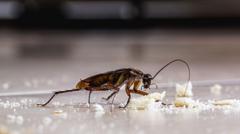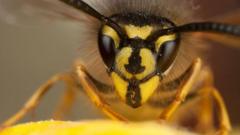Is a Cockroach Infestation Shutting Down Hospital Kitchens?

Addressing Cockroach Infestations in Hospital Kitchens: A Case Study of Singleton Hospital
When it comes to maintaining high standards of hygiene and safety in healthcare environments, a cockroach infestation can pose significant challenges. Recently, Singleton Hospital in Sketty, operated by the Swansea Bay Health Board, faced this very issue, leading to the temporary closure of its main kitchen. This incident highlights the importance of pest control measures in hospitals and the strategies that can be employed to mitigate risks associated with infestations. In this article, we'll explore the implications of such infestations, the steps taken to address them, and best practices for preventing future occurrences.
The Incident at Singleton Hospital
The Swansea Bay Health Board made a public announcement regarding the discovery of a cockroach infestation in the under-croft area of Singleton Hospital. This area is crucial as it often serves as a storage and preparation location for food served to patients and staff. The health board swiftly acted upon the discovery, taking essential steps to ensure that the safety of patients and staff was not compromised.
Immediate Actions Taken
Upon identifying the infestation, the health board implemented the following measures:
- Closure of the Main Kitchen: The main kitchen at Singleton Hospital was temporarily closed to prevent any further spread of the infestation.
- Relocation of Food Production: All catering staff and food production activities were moved to Morriston Hospital's kitchen, thereby ensuring continuity in meal service.
- Disposal of Food: As a precautionary measure, all food produced at Singleton and stored in cold store freezers was discarded.
- Collaboration with Environmental Health: The health board has been working closely with Environmental Health services to effectively eradicate the infestation.
Fortunately, the health board confirmed that no clinical areas had been affected, and patient meals had not been impacted during this period. The dining room and coffee shop remained operational, offering food sourced from off-site suppliers or prepared elsewhere, ensuring that patients and visitors could still access dining options.
Understanding Cockroach Infestations in Healthcare Settings
Cockroaches are more than just a nuisance; they are known carriers of various pathogens. Their presence in a healthcare setting, such as a hospital, can lead to serious health risks, particularly for vulnerable populations like patients with weakened immune systems. Here are some important facts about cockroaches and their potential impact:
Health Risks Associated with Cockroaches
Cockroaches can carry a range of harmful bacteria and allergens that can lead to various health problems, including:
- Gastrointestinal Illnesses: Cockroaches can contaminate food and surfaces, leading to foodborne illnesses.
- Asthma and Allergies: Cockroach droppings, saliva, and shed skins can trigger allergic reactions and asthma attacks, particularly in sensitive individuals.
- Transmission of Diseases: They are known to be vectors for diseases such as Salmonella and E. coli.
Causes of Infestations
Understanding why cockroach infestations occur is essential for prevention. Common causes include:
- Poor Sanitation: Accumulation of food waste and poor cleaning practices can attract cockroaches.
- Structural Issues: Cracks and openings in walls and foundations can provide entry points for these pests.
- Environmental Conditions: Warm and humid environments are conducive to cockroach reproduction.
Best Practices for Preventing Infestations in Healthcare Facilities
Preventing cockroach infestations in healthcare settings requires a proactive approach. Here are some best practices that hospitals and similar facilities can adopt:
1. Regular Inspections and Monitoring
Conducting regular inspections of kitchens, storage areas, and other potential entry points can help identify problems before they escalate. Here are some steps to follow:
- Implement routine pest control inspections.
- Use traps and monitoring devices to detect pest activity.
- Ensure that staff are trained to recognize signs of infestation.
2. Maintaining Cleanliness
Implementing stringent cleaning protocols is crucial. Consider the following:
- Establish a daily cleaning schedule for kitchens and dining areas.
- Ensure all food waste is disposed of properly and promptly.
- Utilize pest-repellent cleaning supplies when appropriate.
3. Structural Maintenance
Regular maintenance checks can prevent entry points for pests. Key actions include:
- Seal cracks and gaps in walls, doors, and windows.
- Install door sweeps and screens to block entry.
- Inspect plumbing for leaks, as moisture can attract cockroaches.
4. Staff Training and Awareness
Educating staff about the importance of pest control can foster a culture of cleanliness and vigilance. Important elements include:
- Provide training on identifying signs of infestations.
- Encourage reporting of any unusual sightings immediately.
- Involve staff in maintaining cleanliness and hygiene protocols.
5. Collaboration with Pest Control Professionals
Establishing a partnership with pest control experts can help in creating an effective pest management plan. Considerations include:
- Schedule regular pest control treatments.
- Ensure that pest control services are licensed and experienced with healthcare environments.
- Review and update pest management strategies regularly based on inspections and incidents.
Conclusion
The incident at Singleton Hospital serves as a stark reminder of the importance of stringent hygiene and pest control measures in healthcare settings. While the closure of a main kitchen due to a cockroach infestation is unfortunate, the swift actions taken by Swansea Bay Health Board demonstrate a commitment to patient safety and well-being. Hospitals must continuously strive to improve their pest management strategies to prevent future infestations and ensure a safe environment for all.
As healthcare facilities navigate the complexities of maintaining hygiene, the question remains: How can we further enhance pest control measures in hospitals to safeguard public health? The challenges are significant, but with the right strategies, they can be effectively managed.
FAQs
What should I do if I see a cockroach in a hospital?
If you see a cockroach in a hospital, report it immediately to the staff or management. They will take necessary actions to address the situation.
How can hospitals ensure food safety during a pest infestation?
Hospitals can ensure food safety by relocating food production to unaffected areas, disposing of contaminated food, and working closely with pest control professionals.
What are the signs of a cockroach infestation?
Signs of a cockroach infestation include sightings of cockroaches, droppings, egg cases, and a musty odor. Prompt reporting and inspection are recommended if these signs are noticed.
Maintaining a pest-free environment is crucial, especially in healthcare settings. How prepared is your local hospital to handle pest infestations? #PestControl #HealthcareSafety #FoodHygiene
Published: 2025-07-18 18:50:04 | Category: wales



